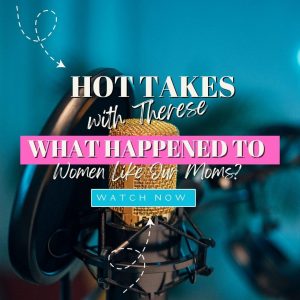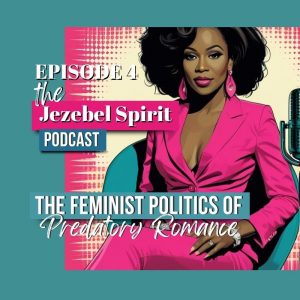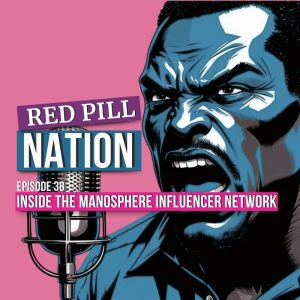The internet has always had pockets where chaos thrives. Places like forums, personal blogs, and late-night chat rooms where people came to vent, swap jokes, or stew in frustration. Over the past decade, one of those pockets has expanded into something far larger: an interlinked web of influencers, online communities, and content creators bound by a common thread, hostility toward women.
What began as a niche subculture on obscure message boards has turned into a sprawling, billion-dollar industry, one that now shapes everything from dating norms to political talking points.
In the first episode of Red Pill Nation, I take you inside that evolution. How it happened, why it matters, and why ignoring it is no longer an option.
“The manosphere isn’t just a cluster of cranky men online. It’s a radicalization pipeline with a body count.”
Where It Began
The modern manosphere didn’t appear overnight. Its roots go back to the late 2000s and early 2010s, when socially isolated men began finding each other in corners of the internet. Spaces like Reddit’s r/TheRedPill, certain 4chan boards, and pickup artist blogs became informal locker rooms, places to unload about dating woes, job frustrations, and cultural grievances.
What pushed the growth came down to three things:
- Loneliness and alienation – Men facing struggles in their relationships or careers discovered a kind of validation inside anonymous forums.
- Cultural backlash – As feminism gained visibility in the mainstream, those same spaces reframed equality as a hostile move against men.
- Algorithms that reward outrage – Platforms like YouTube and Facebook boosted the most provocative voices, amplifying grievance-based content far beyond niche forums.
The tone shifted quickly from personal frustration to collective ideology. Members weren’t just swapping dating tips; they were being taught that women were the problem, society had been rigged against men, and that reclaiming dominance was the only solution.
By the early 2010s, influencers like Roosh V and Rollo Tomassi were building audiences on “self-improvement” blogs that doubled as anti-feminist manifestos.
Early adopters of this space built a familiar formula. They tied personal branding to grievance politics, sprinkled in enough pseudo-science to give it an air of authority, and kept followers hooked by serving up a steady list of people to blame.
From Fringe to Mainstream
What started in small, insulated corners of the internet has grown into a media network with mass reach. Influencers with sharp visuals and professional presentation now move manosphere ideas through YouTube, TikTok, podcasts, and even their own self-published books.
Some are obvious. They’re blunt about their contempt for women, calling themselves “alpha males” or “truth tellers.” Others take a softer entry point, hiding gendered narratives inside motivational talk, productivity tips, or business advice.
Then there are the shape-shifters. Men who present as thinkers, leaning on long-form podcasts or polished video essays to frame their points as rational discussion. They avoid outright slurs, which helps them connect with people who might reject the louder, more extreme voices, yet the underlying ideology is still intact.
“It’s not a subculture anymore. It’s an industry with its own celebrities, marketing pipelines, and conversion strategies.”
The result is a movement that feels accessible to young men who might never intentionally seek out extremist content. It’s been woven into gym culture, entrepreneurial circles, gaming communities, and even mainstream dating advice.
Why It’s Not Just “Internet Drama”
One of the most dangerous misconceptions about the manosphere is that it’s just talk. The reality is far darker. Over the last decade, several perpetrators of mass violence, including the 2014 Isla Vista shooter, have cited manosphere ideology in their manifestos. Governments in Canada, the UK, and the U.S. have begun classifying misogynistic extremism as a security concern.
Incel forums openly praise attackers as “saints” and treat mass murder as a form of vengeance. Popular influencers have echoed similar sentiments in more coded terms, framing violence as a natural outcome of “men being pushed too far.”
This isn’t accidental. The manosphere primes its audience for radicalization. It starts with seemingly benign complaints. Dating apps, divorce laws, “double standards,” and gradually introduces conspiracies about feminism, demographic change, and political corruption. Once you accept that women are the root cause of personal failure, it’s easy to accept the next leap: that society must be “corrected” through political or even violent means.
The Cultural Stakes
The manosphere doesn’t just harm individual relationships. It’s reshaping gender norms, influencing elections, and normalizing the idea that equality is a threat. Its talking points are echoed by mainstream commentators, politicians, and media outlets.
Its narratives also travel well. A talking point coined in a YouTube video can appear in a political speech within months. Dating app complaints turn into proposed legislation on family law. Misogynistic tropes get repackaged as “just asking questions” segments on major news platforms.
And because it’s highly adaptable, it can absorb almost any grievance. Economic hardship, dating frustrations, workplace competition, and filter it through the lens of male victimhood. That adaptability is what allows it to keep going, even when certain platforms fade away or a once-prominent influencer slips out of view.
Where This Series Goes Next
This episode lays the groundwork for a closer look inside the manosphere. In the coming pieces, we will:
- Unpack the language that masks misogyny as guidance.
- Trace how influencers are linked, and where their money comes from.
- Point out the ways the manosphere intersects with far-right politics.
- Explain how platforms make money by keeping audiences agitated and engaged
The aim here isn’t only to outline the problem. It’s to examine the system that makes it possible. Because once the structure is visible, it can be taken apart.



